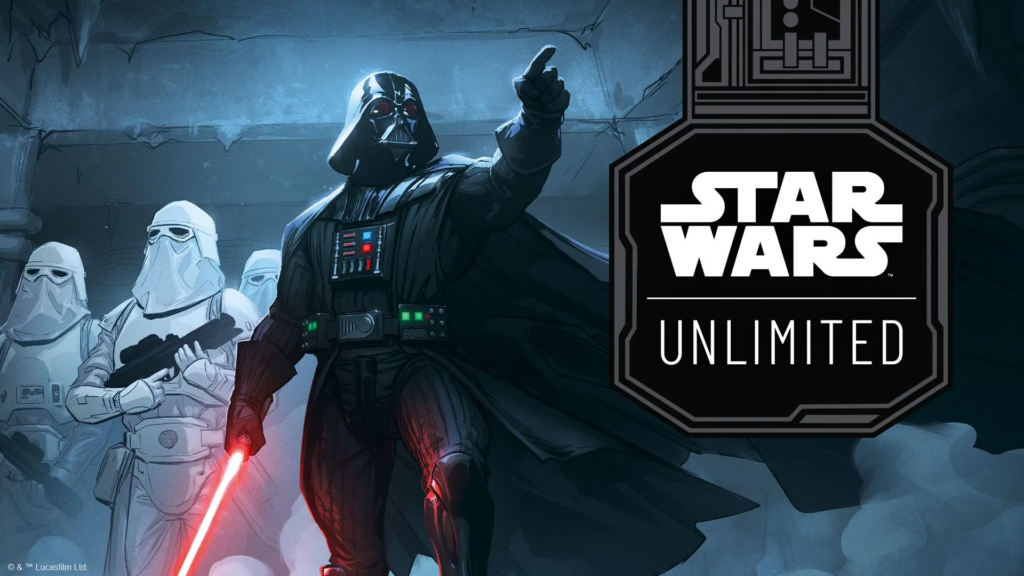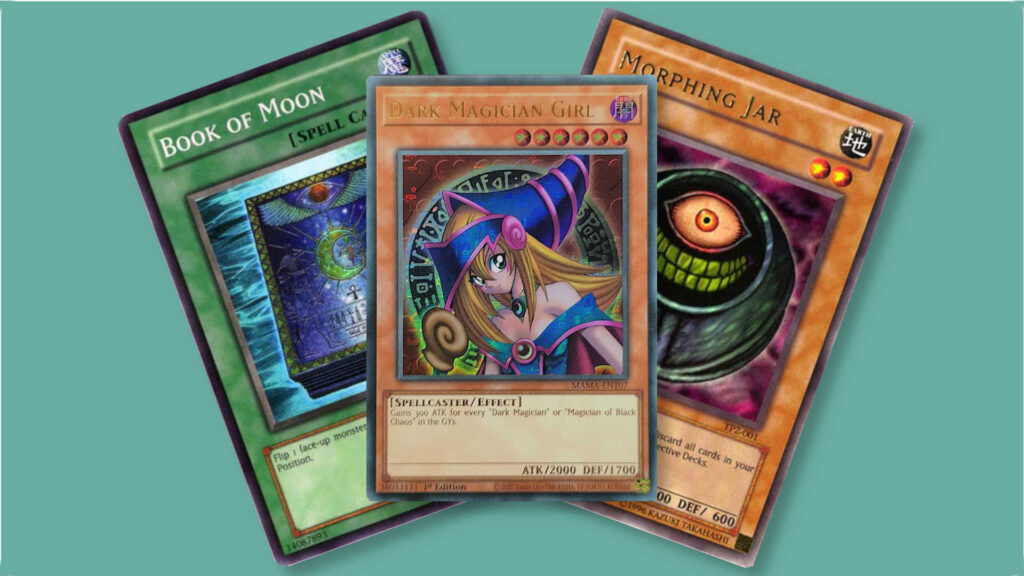The first Star Wars movie released almost 50 years ago, and it’s become the fourth most successful media franchise in the world. The sci-fi monolith has had its fair share of attempted of TCGs, including one designed by Richard Garfield, the inventor of Magic: The Gathering. However, this second attempt by Fantasy Flight Games (FFG) seems to have gotten the formula right. Star Wars Unlimited was chosen as Card Gamer’s “Favorite New TCG of 2024” and personal anecdotes I’ve heard (and share as well) are that people are enjoying the game so far and excited for the three new sets slated for 2025.
It’s the perfect time to get into the game, so for all you newbies and curious gamers, let’s talk about how to play Star Wars Unlimited.
Table of Contents
ToggleGetting Started in Star Wars Unlimited
First and foremost, this is a new game with its own rules, and it’s adding new keywords/rules interactions in every new set. People have a tendency to rely on pattern matching and underestimate how strong the law of primacy affects how humans approach new things. Basically, the law of primacy states the first thing learned often creates a strong direction on how we learn for the future. In aviation, this is a massive point to instructors when they’re teaching new pilots. The “worst” thing to do is teach someone something wrong in their first few classes, because it will be exceptionally difficult to break those poor habits later.
So, it can be difficult to learn a new TCG when you have experience in a different TCG. I had to have the Foresight to try and shed all those rules floating around my head. It was extremely difficult, but I found it was a Rich Reward to enter SWU with an open mind, humility, and willingness to accept something new and different. In the immortal words of Master Yoda, “you must unlearn what you have learned.”
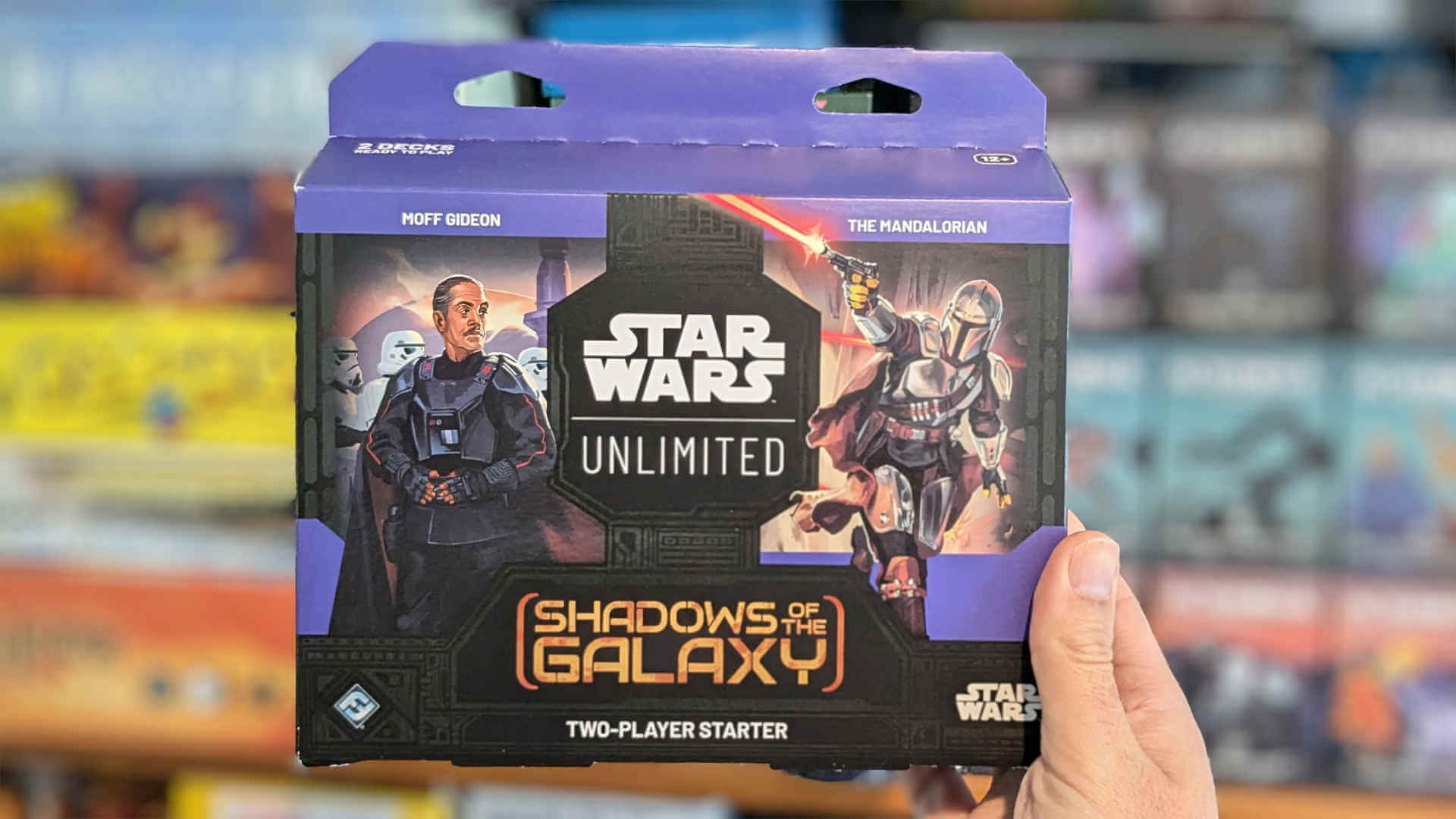
The best way to learn SWU is to get one of the Two-Player Starter sets. It really doesn’t matter which you pick, though the first two probably are the most balanced, so pick the leaders you like the most. I personally like the Darth Vader and Luke Skywalker Starter, but then again you might favor General Grievous and Ahsoka.
Then, grab a friend and read these instructions on how to play. Remember, this is a TCG; read the card and do what it says explicitly. People tend to unnecessarily muddy the waters when they inject feelings on what they think a card “should” do, rather than just doing what the card says. Now, be prepared to have fun.
Breakdown of a Starter Deck/Premier Deck
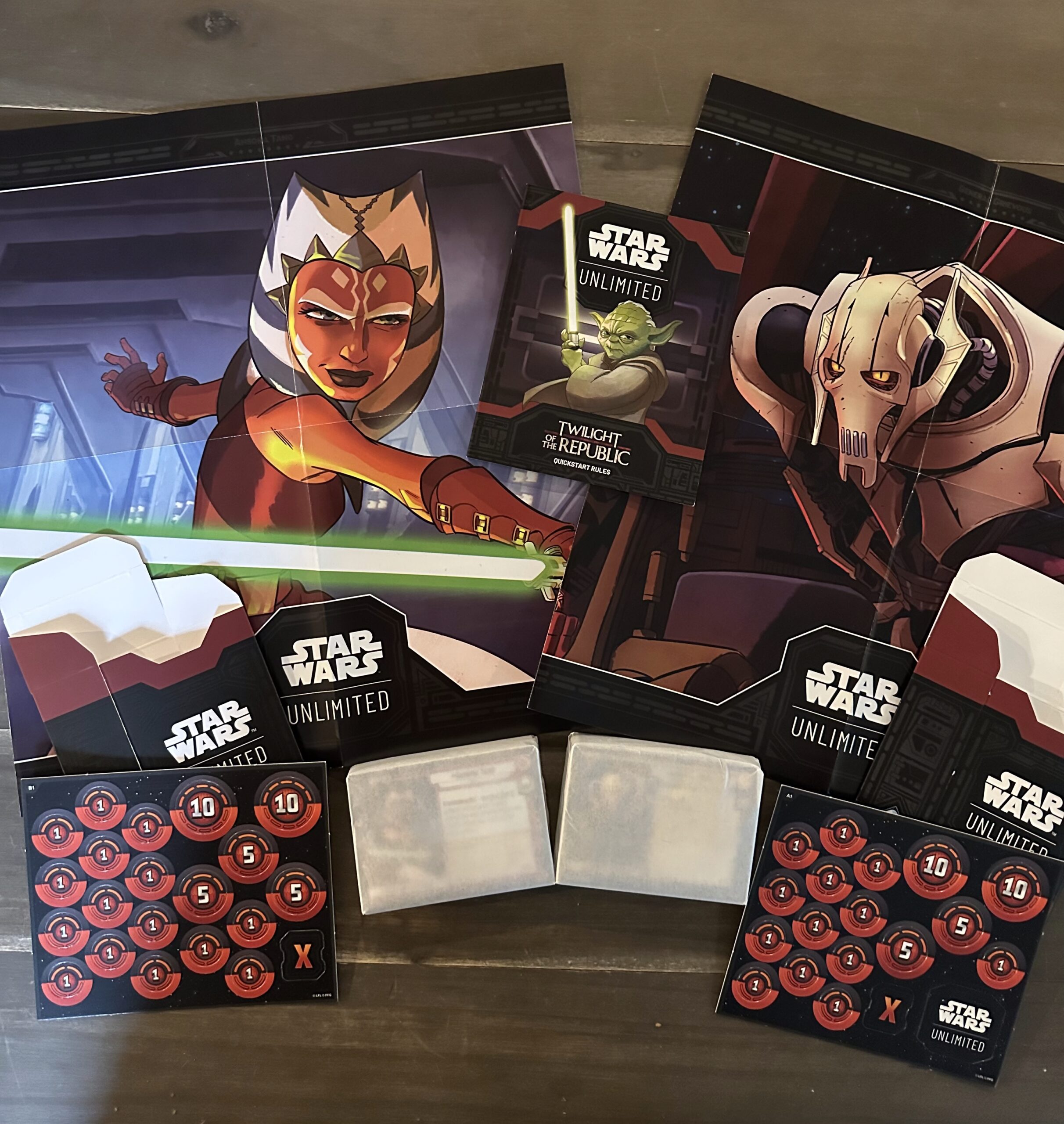
The Starter sets include two decks, a copy of the quickstart rules, cardboard tokens needed to track damage, and two posters of the leaders which have a graphical depiction of the play zones, guides for round structure, reference for keywords, and a reminder on how triggered abilities work on their back side.
The Starter Decks are constructed to mirror a Premier deck. Premier is one of the two constructed (i.e., the player creates the deck ahead of time prior to playing with said deck) formats recognized by FFG in SWU. Basically, you have one leader, one base, and no less than 50 other cards, with the stipulation that no more than three copies of a card can be included in the deck.
Premier is typically played in a 1v1 format, which is perfect for the Starter Decks. The decks have a mix of units, events, upgrades, and some cards that are only found in Starter Decks (for example: Anakin Skywalker – Maverick Mentor).
How to Win in Star Wars Unlimited
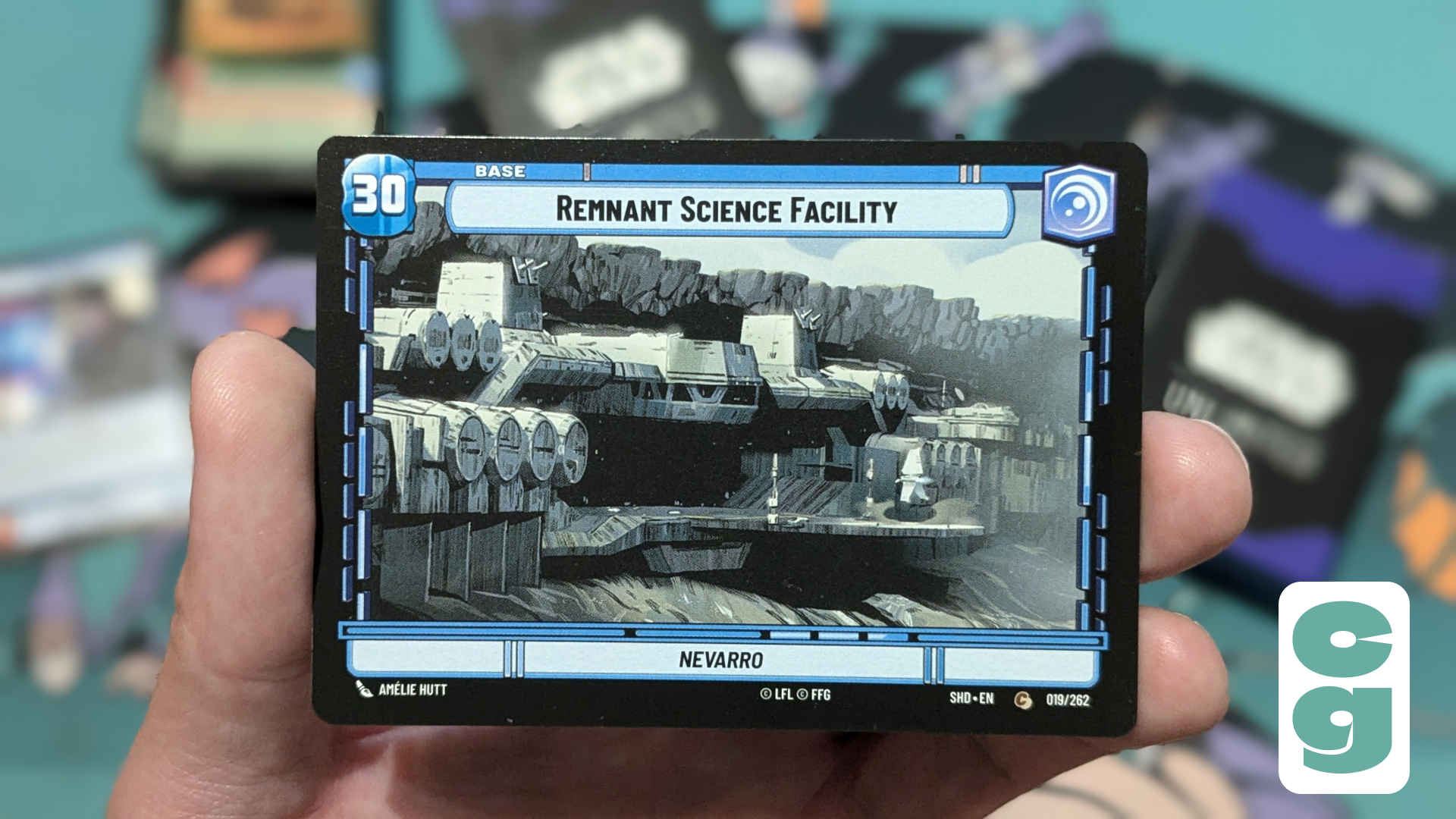
The object of the game is to deal damage to meet or exceed the opponent’s base’s Hit Points (HP) before the opponent does the same to you. There are multiple ways to do this, but the most common way is using units to attack their base directly. Of course the opponent is trying to do the same to you while simultaneously trying to prevent you from turning their base into Smoke and Cinders.
Anatomy of Star Wars Unlimited Cards
SWU cards can have the following:
- a name
- subtitle
- card type
- arena type
- cost
- aspect(s)
- power/power modifier
- HP/HP modifier
- trait(s)
- text
At the minimum, all cards have a name, card type, and trait(s). The most notable attribute of an SWU card is its aspect (common slang refers to aspect as “color”). The aspects in SWU are Vigilance, Command, Aggression, Cunning (blue, green, red, and yellow, respectively), Villainy, and Heroism. Some cards have no aspect (or “colorless”) meaning any deck can use them. You might hear the phrase “dies to Confiscate,” in regards to an aspectless card and its potential to see more play in Jump to Lightspeed (JTL). Notice Confiscate’s grey border compared to the red border with Death Star Stormtrooper, or the yellow border for R2-D2. Speaking of Death Star Stormtrooper, let’s dissect that card as an example of an SWU unit.
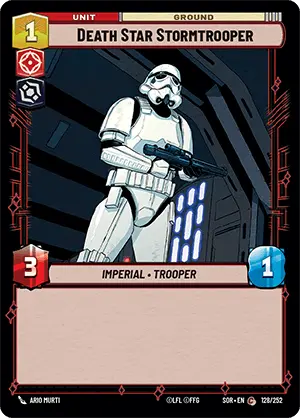
The top left corner has a “1” which is the amount of resources you must pay to put this card into play. Under the cost are the two aspects you need to have as your leader and base combo to avoid paying an aspect penalty (the red symbol indicates Aggression and the black and white symbol indicates Villainy). Next to the cost you have the card type, which is unit, and to the right of that you have the arena the unit will operate in. This unit happens to operate in the ground arena (I can’t imagine this poor fellow doing too well in space).
The red hexagon with the white 3 is the unit’s power, and opposite of that is a blue rounded hexagon with the white 1 is the unit’s HP. Between those are the unit’s traits. In this instance the unit has two traits, Imperial and Trooper.
Setting Up a Game of Star Wars Unlimited
Play Area
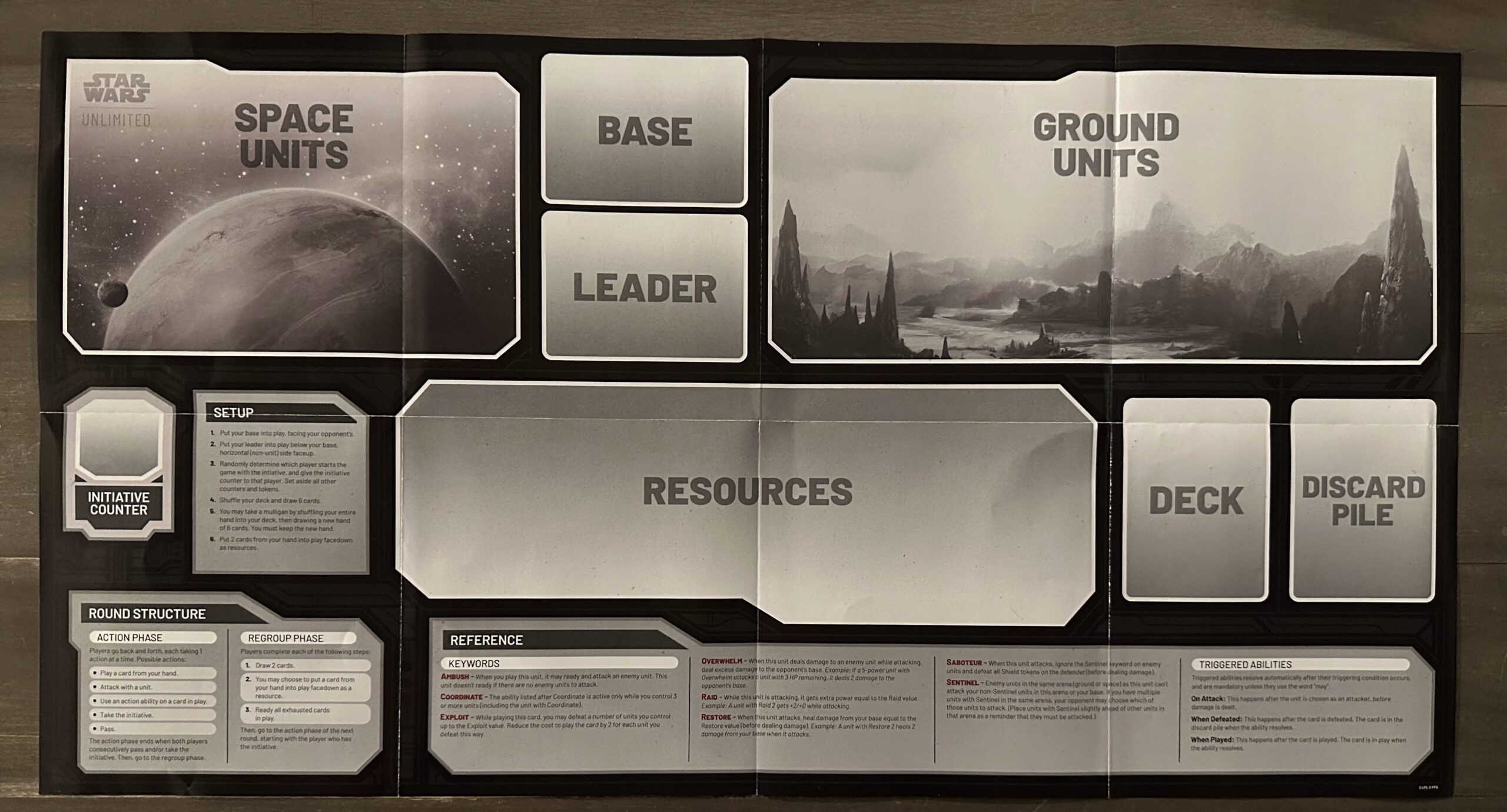
There are seven different zones in your play area, each with its own specific rules.
- Base zone – where your base goes
- Leader zone – where your leader goes
- Ground and space arenas – where the ground units and space units are placed, respectively
- Resources zone – where a player will put cards face down to be used to pay the costs of other cards during the game
- Deck zone – where you place your deck face down. Cards in your deck cannot be viewed until drawn or through the use of card abilities
- Discard pile – defeated units go here, as well as played event cards and discarded cards
If this sounds a bit confusing, or you’re a visual learner, just flip the Two-Player Starter set character poster over to the play mat (shown in the picture above). In the bottom left corner it has a reminder for the steps of a turn.
Game Setup
Here are the steps for getting set up for your game:
- Put bases and then leaders into the their zones.
- Just like most TCGs, flip a coin or roll dice to see who has the option of getting the initiative counter. This counter, in simple terms, determines “who goes first” during the action phase.
- Shuffle decks, and draw your first six cards. You have the option to mulligan by shuffling your hand back into your deck and drawing six cards again. However, if you mulligan, you have to accept the results of that draw.
- Then you must choose two of your six cards to put face down in the resource zone to be used as resources to pay the cost of cards.
Turns in Star Wars Unlimited
Gameplay in SWU consists of two phases: the action phase and the regroup phase.
The Action Phase
Remember when I said this is a new game with its own rules? The biggest thing I had to adjust to is that the play pacing is like chess and order of the phases was different from what I was used to.
So, like chess, player one takes an action and one action only (unless an event card like Rebel Assault instructs otherwise), then player two takes an action, then player one takes an action, and so on and so forth until both players consecutively pass or one player takes the initiative counter (meaning they’ll start the action phase next round) and the other player passes after they cannot take anymore actions.
These are the actions you can take in the action phase:
- Play a card
- Attack with a unit
- Use an action ability on a card in play
- Take the initiative
- Pass
Playing Cards
There are currently three types of cards you can play in Star Wars Unlimited: units, upgrades, and events. Play a card by exhausting the number of resources shown on the cost (to exhaust something, you turn it sideways, similar to “tapping” or “resting” in other TCGs).
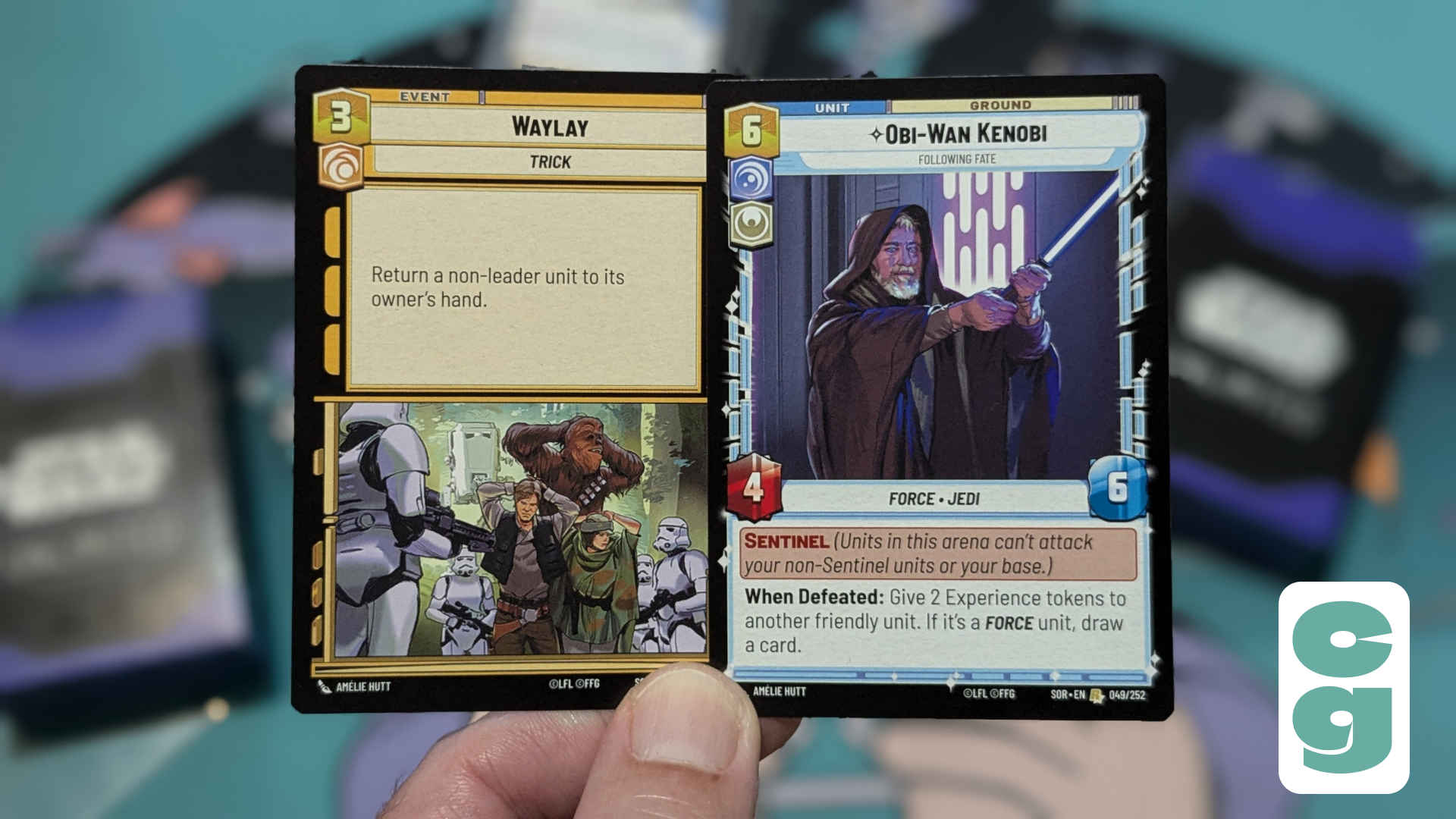
Units will enter play exhausted in their respective arena (ground or space) and stay there until defeated. Upgrade cards (like Academy Training) enter play attached to a unit, and stay in play until the upgrade or the unit it’s attached to is defeated, at which point it’ll go to the discard pile.
When you play an event card (like the aforementioned Rebel Assault), you’ll carry out its effects, then put it into the discard pile.
Attacking
Attacking is our main way to win the game. A ready unit can attack an opponent’s base or one of their units in the same arena (a ground unit can’t attack a space unit, and vice versa).
To attack with a unit, exhaust it, then declare its attack target. Keep in mind that if an enemy unit in the same arena as your attacking unit has the Sentinel keyword, your attacker must attack that unit. If your attacker has any On Attack triggers, resolve those now.
If you’re attacking a base, you deal damage to the base equal to the attacker’s power. In SWU, damage is cumulative, so you’ll note the amount of damage on the base with a damage marker, and it stays there until it’s healed or the game ends.
If you’re attacking an enemy unit, the two units will take damage at the same time equal to the other unit’s power. Put damage markers on the units equal to the damage taken. If a unit has taken damage greater than or equal to its HP, that unit is defeated and goes to its owner’s discard pile.
Action Abilities
Some of the cards in play will have action abilities. These abilities will frequently have a cost, such as exhausting the card or exhausting resources. To activate an ability, pay any costs, then carry out its effects.
Epic
Your leader has an Epic Action ability. A card’s Epic Action can only be activated once per game. This ability won’t be available at the beginning of the game, and will require you to control a certain number of resources before you can activate it.
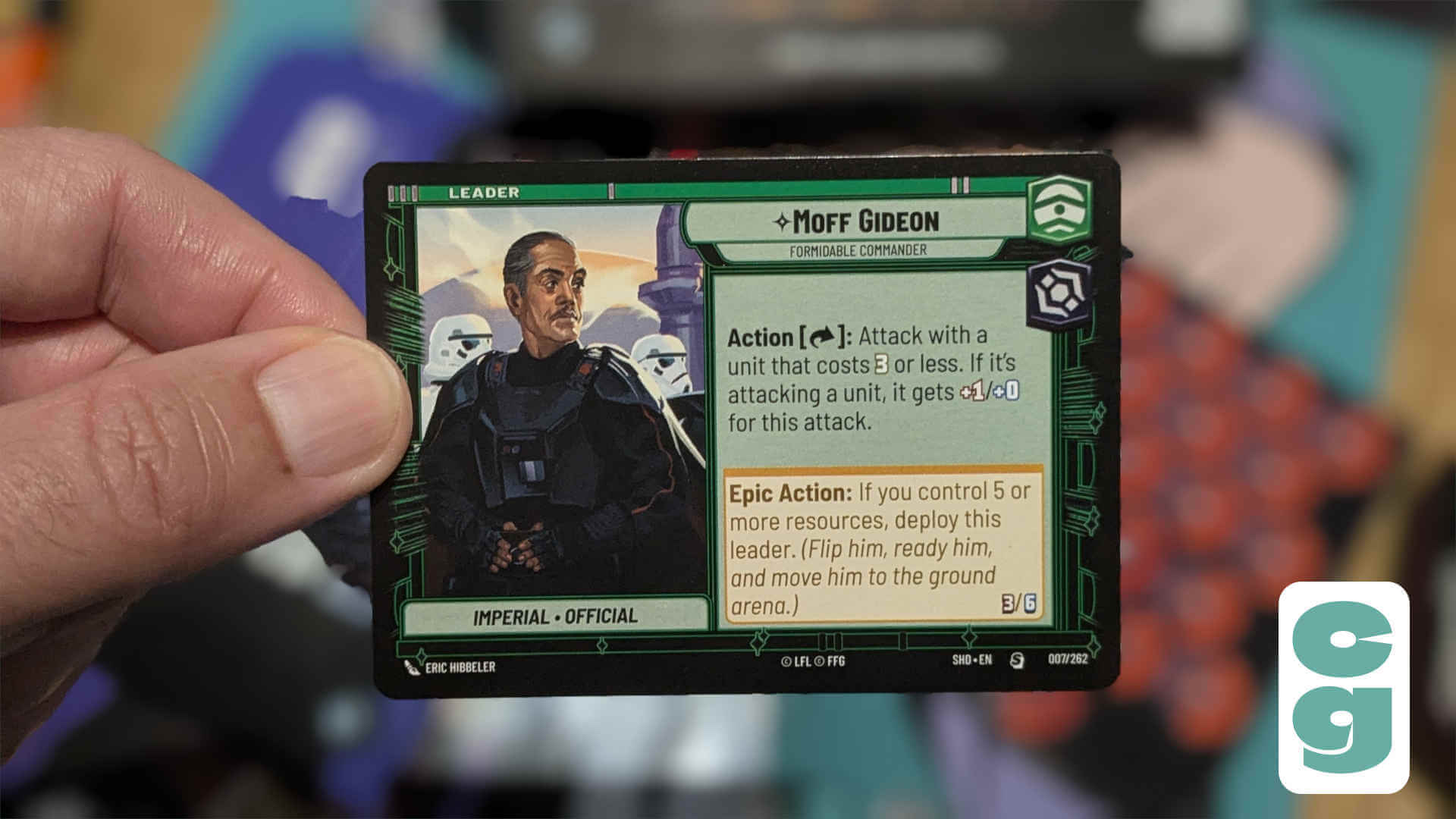
When you activate your leader’s Epic, flip it over to its unit side and put it into the arena in the ready state. At this point your leader operates just like any other unit – it will have power and HP, it can attack, its abilities can be activated, and it can be defeated. If your leader takes enough damage to defeat it, you’ll flip it back to the other side and put it back in your leader zone. You won’t be able to flip it again in this game.
Taking the Initiative
The player with the initiative takes the first action in the next round’s action phase. Either player can take this action, including the player who already has the initiative. If you do this action, you lose the ability to take any more actions for the rest of the round. Only one player can take the initiative each round.
Passing
You can choose to do no actions when it’s your turn, which is called passing. If you pass, it becomes your opponent’s turn. If your opponent takes an action, you’ll once again be able to take an action. But if your opponent also passes, then the action phase ends.
The Regroup Phase
After the action phase ends the players begin the regroup phase. Both players perform this phase at the same time. In this phase you:
- Draw two cards from your deck
- Put up to one card from your hand face down into the resource zone (the player with the initiative makes their decision to resource a card first). Resources enter play exhausted
- Ready all exhausted cards in play
After the regroup phase, you go back to the action phase, and the player with the initiative takes their first action.
Rinse and repeat until you crush your enemy, see them driven before you… oh wait. Wrong genre and franchise.
Basics… But There’s So Much More
That was just the basics to getting started. The damage staying on cards is an exciting difference to learn and added a whole layer of nuance to combat. It’s also important to know FFG publishes a new Comprehensive Rules version with each new set (expect 4.0 with JTL). There’s so much more to this game, I could write another 1500 words on just the types of cards and keywords that exist. I will in future articles, but for now just get out and experience the game and nail down the basic rules. It’s a fantastic game.
Some Helpful Starter Advice for Star Wars Unlimited
I asked myself and local players in my area what they wish they knew when they first started. My simple answer was “I didn’t realize how important Sentinel units are to defense of your base.” Another was, “Upgrades are way better in SWU than in other games.” Last, “Make sure your first action of the turn is impactful. For example, don’t play a new unit and leave a good attacker to simply die immediately after.”
I hope this guide is helpful for new players or people thinking about jumping into SWU. I cannot recommend this game enough. It’s great for casual play, multiplayer (Twin Suns, the other sanctioned constructed format), and competitive play. FFG is doing a great job, and I look forward to the next three sets.
As always: be cool to your fellow players, be cool to your judges, hydrate, eat well, and wear clean socks.
Hit me up anytime on Bluesky @TheFlyingWriter or Reddit at u/TheFlyingWriter

